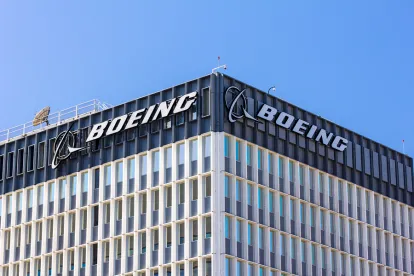Key Points
-
In a March 30 press release, the US Commerce Department updated its March 18 list of aircraft that have flown into Russia in apparent violation of Export Administration Regulations by adding 73 aircraft and removing 12 aircraft that have been authorized by the BIS to return to their owners in “partner countries.”
-
The press release reiterates the risk discussed in our previous Aviation Advisory of violation of US law even to lessors and financers whose aircraft continue to be flown only within Russia.
-
The BIS has acknowledged that several companies have already filed voluntary disclosures on potential violations, to allow the aircraft to depart Russia.
Overview
As we discussed in our March 21 advisory, on February 24, in response to the invasion by Russia of Ukraine, the US Department of Commerce, Bureau of Industry and Security (BIS) issued new rules (the Rules). The Rules effectively prohibit the export, re-export, or in-country transfer or use of Boeing (or other US-manufactured) aircraft (as well as other aircraft and aircraft components with at least 25 percent US content) in or to Russia without a license. On March 2, the BIS extended the Rules to Belarus. On March 18, the BIS issued a press release identifying nearly 100 US-manufactured aircraft (all Boeing except for one Gulfstream), most apparently on lease to Russian airlines, as having violated the Rules because such aircraft had since the issuance of the Rules flown from third countries into Russia (See the release). The effect of such violation is that such aircraft are thereafter prohibited from being sold, transferred, exported, re-exported, financed, ordered, bought, removed, concealed, stored, used, loaned, disposed of, transported, forwarded or otherwise serviced by any person anywhere who has knowledge of the violation (which the BIS just notified the public of). 15 CFR § 736.2(b)(10). As such, the continued leasing and financing of such an aircraft by a person with knowledge of the violation would be prohibited without a license. However, such prohibition is not limited to aircraft having flown into Russia since the issuance of the Rules. It extends also to aircraft flying within Russia since the issuance of the Rules. On March 30, the BIS updated the list of identified aircraft by adding 73 and removing 12 aircraft “that have been authorized to return to owners in partner countries” (see the press release). The added aircraft were identified by the BIS also as having flown from third countries to Russia since March 2. The removed aircraft were in the fleets of AirBridgeCargo, Azur Air and Nordwind. The BIS granted these authorizations in order to allow these aircraft to leave Russia, thereby preventing the Russian government from maintaining operational control over the aircraft. The BIS cautioned that the updated list is not exhaustive, and will continue to be updated, and is part of the BIS’s “ongoing effort to identify and publicly list aircraft in likely violation” of the Rules and as “notification to the public” that any form of “service” to these aircraft requires BIS authorization. The BIS also cautioned that the restrictions apply whether or not an aircraft is on the list. Importantly, the BIS also noted that its March 18 announcement led to several companies submitting voluntary disclosures of possible violations of the Rules and requesting permission to conduct actions that may be prohibited by the Export Administration Regulations (EAR). This led to the BIS’s granting permission for these aircraft to depart Russia.
The Rules Also Affect Aircraft Operated Only Within Russia
The BIS has now identified some 170 aircraft by owner or operator, registration mark, manufacturer’s serial number, and aircraft type as having apparently violated the Rules. The violations identified by the BIS consisted of flights of such aircraft from third countries to Russia. However, the transfer or use of any aircraft within Russia is also a violation of the Rules. This includes flights entirely within Russia. Any violation described in this paragraph gives rise to prohibitions under the Rules against leasing, financing and other activities with respect to the affected aircraft by parties having knowledge of the violation. So unless an aircraft in Russia has remained grounded since the Rules were issued, the continued leasing or financing of that aircraft (among other activities) by a party having knowledge that it had operated within Russia may be prohibited by US law.
Conclusion
Although the latest press release identifies flights from third countries into Russia as trigger events for the application of the prohibition on leasing, financing and other activities proscribed by the Rules, the press release (and original press release on March 18) and related materials indicate that US export restrictions also cover flights within Russia. It also makes clear that the BIS will grant authorizations for aircraft to leave Russia if voluntary disclosures are submitted to it in regard to possible violations of the Rules.
As we pointed out in our earlier advisory, please note that other rules may apply to leasing and financing of commercial aircraft in Russia including the rules of the Office of Foreign Assets Control (OFAC) of the US Department of Treasury, and the rules issued by the European Union in response to the Russian invasion. Lessee parties to a leasing transaction, including airline majority shareholders, require screening against sanction regimes to ensure OFAC violations do not occur separate from the export licensing issues covered here.








 />i
/>i

